According to the World Health Organization, approximately 40 percent of men with male infertility are found to have varicoceles and these lesions may be correctable.
When varicoceles are present, the veins are large and lack internal valves. As a result, the blood flow goes backward into the testicles in the venous system causing a buildup of heat, pressure and poor oxygenation of the sperm producing tissue. The net effect of the backflow may be manifested as a low sperm count in the semen, poor motility, or abnormal sperm morphology.To correct these lesions, Cooper performs outpatient, subinguinal microsurgical varicocelectomy with sedation and local anesthesia. These procedures have gained wide acceptance. Patients typically undergo surgery on Friday and are able to return to work on Monday.
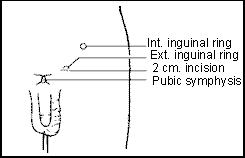 |
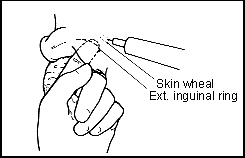 |
| The anatomic relationship between the internal (Inc.) inguinal ring, the external (Ext.) ring, and the pubic symphsis. A 2-cm mini-incision was made just over the external inguinal ring. (From Marmar JL, DeBenedictis TJ, Praiss D. Fertil Steril. 1985;43:583-588.) | The index finger is introduced via the scrotum in the direction of the Ext. inguinal ring. The anesthetic is delivered through a skin wheal just over the Ext. inguinal ring. (Fertil Steril. 1985;43:583-588.) |
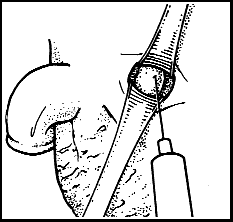 |
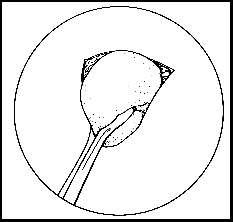 |
| The incision is separated by small band retractors. Xylocaine is injected under the cremasteric fascia under direct vision to block a segment of the spermatic cord. | The anesthetized segment of the spermatic cord is then grasped with a Babcock clamp and brought to the surface through the inguinal incision. |
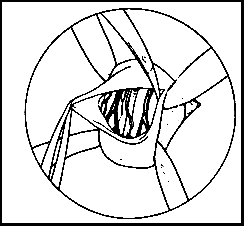 |
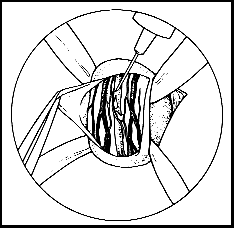 |
| The spermatic cord is draped over two Penrose drains. The distal Penrose drain is held taught in order to stabilize the cord, whereas the proximal drain is allowed to remain loose. The cremasteric fascia is examined under the operating microscope and opened in two layers to avoid the lymphatics. | The fascia of the cord is spread widely to identify the artery and vas deferens. The cord is sprayed with papaverine hydrochloride to augment the arterial beat prior to dissection of the varicosities. |
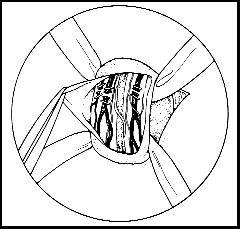 |
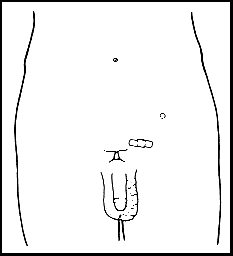 |
| The varicose veins are clipped with hemoclips and transected. | The incision is closed with absorbable suture and covered with a band-aid. |
Statistical data on 606 procedures suggest that the semen parameters improved in 63-75 percent of the patients and that the pregnancy rates were 37.5 percent within the first year of the surgery. If pregnancies do not occur naturally, artificial insemination may be utilized after surgery.
Contact Us
To learn more about services available through our division of surgery or to schedule an appointment, please call 800.8.COOPER (800.826.6737).
